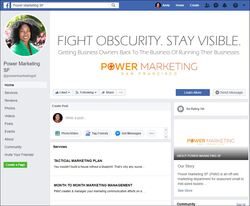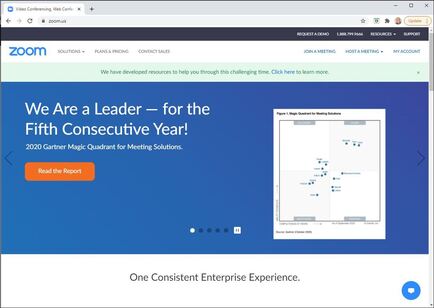 Last week, my good friend, Paula Mattisonsierra of Power Marketing SF in San Francisco, invited me to be a guest on her Facebook Live series, TEN@10. We're going to talk about why businesses should blog on their websites and the best ways to go about it. To watch this episode, go to the Power Marketing SF Facebook page at 1 p.m. EDT tomorrow (October 30, 2020). As I wrote in Monday's blog post, this interview will be recorded and I'll have access to the recording, so I'm going to have it transcribed so I can post the video and the transcription on my website. Having a transcription available is a great service to the user because he or she may not want everyone around them to hear what they're watching. More important, it's great SEO content that can help boost your rankings. And since you're putting the time and effort into creating the video, why not get the most benefit you can from it? In fact, not doing a transcription is like spending a ton of money on the latest iPhone and then only using it to make phone calls. It can do so much more!  Getting The Transcription You have a couple of options here, depending on whether you're willing to spend money on the transcription or not. If you're willing to listen to the video and manually type it up yourself, it doesn't cost anything but your time. In fact, you can even get a head start by uploading the video to YouTube and using the machine-generated transcript. (Near the bottom right of the video, click on the three dots and scroll down to "Open Transcript." Then copy and paste into a Word document. A word of warning: it will take a lot of clean up to remove all the timestamps and correct any mistakes you find.) Personally, I decided to pay for the transcript through a service called GoTranscript. There are several of these services, which you can find with a quick Google search. I don't know how long the video will run, but I got an instant online estimate for a 30-minute video and the charge would be only $34.50. The final transcript will be delivered to me online in five business days. Money well spent, as far as I'm concerned. Part 3: The Interview (Coming Friday)
0 Comments
 As difficult as the COVID-19 pandemic has been, there's no denying that we've all learned a few things that we won't un-learn after the chaos calms down and life gets back to normal. For example almost anything you want to purchase can be shipped or delivered. Many people have broken their cabin fever by taking long walks, which is great for physical and mental health. And we're all a lot more comfortable with virtual communications, especially on Zoom, so expect a lot more working from home and a lot less unnecessary commuting. A specific trend we've seen is small business owners and entrepreneurs embracing their roles as "content creators," holding live interview-style events and recording them on Zoom (or Facebook Live, Google Hangouts, Skype, etc.). It's a great way to boost your messaging and build your brand as an authority in your field, especially if you do it on a regular schedule and start to build an audience. Too often, though, content creators don't leverage this marketing asset to its fullest. They simply host the event, record the video, post it on their website, and push it out through social media. In my opinion, that's like buying an expensive smartphone and then only using it to... well, make phone calls. Whether you only use it to make calls or have a hundred apps loaded onto it (a few of which you actually use), the phone costs the same. With videos, one of the missed opportunities I see all the time is that the content creator never has the video transcribed. If you have a transcription, you can post it on your website, which benefits you in a couple of important ways. First, it gives the user the option to read it instead of watching the video, which they may prefer if they're sitting in a cubicle and don't want everyone within earshot to know they're watching a video. Second, the transcription is relevant written content that the Google algorithm just loves. So if your business relies on traffic to your website to generate leads or online sales, posting the written transcription will help boost your rankings. And if you're doing it frequently, even better because fresh content is always great for your SEO. Getting a written transcript can actually be done for free, if you're willing to spend some time on it. You can even get a head start for free by uploading the video to YouTube, which then posts a machine-generated transcript you can use, although it will need quite a bit of cleaning up. A better option would be to purchase a transcription through an online service, which are inexpensive and easy to find on Google. For about a dollar per minute, you upload the video or provide the URL where it lives, and within a few days, it's done. Once you have it, simply post it to your site, preferably with the video (or a link to the video), and you can feel great that you've taken full advantage of the video you created. Part 2: Follow Along As I Put This Strategy To Work (Coming Wednesday) On Tuesday, I was invited by Rob Hynes and Julio Aviles of the Crema de Nona networking group to appear on their weekly webcast. Enjoy... Clearly, social distancing has become a new phrase in everyone's vocabulary as we all try to ride out the coronavirus storm. For those of us who are business owners and salespeople, however, we can't do business without networking. So at Impact Nona BNI, we have moved our weekly meetings online, starting Wednesday, April 1 at 8 a.m. and continuing until it's safe to start meeting in person again.
What is BNI? With over 9,000 chapters around the world, BNI has more than 270,000 members who have passed millions of referrals resulting in $16.7 Billion in closed business in the last 12 months. So come find out what all the BNI buzz is about. Just register at the link below and we'll send you all the info you need to start networking online with us. https://bniorl.com/en-US/visitorregistration?chapterId=24028 We look forward to meeting you!  Courtesy of Annamaria Vidovic via Flickr Courtesy of Annamaria Vidovic via Flickr There's been some debate over the years as to whether the length of a webpage, blog post, landing page, etc., affects the page's search rankings. Some have suggested that its specifically part of the criteria Google uses in its algorithm to evaluate the user experience a webpage delivers to the user. In other words, is it what the user is truly looking for? As recently as August 2019, Google's John Muller went on Reddit and said, "Word count is not a ranking factor. Save yourself the trouble." So there we have it... end of debate, right? Well, not quite. After all, whether word count is one of the 200+ Google ranking factors is a much different question than "Does word count positively impact a page's search ranking?" Why? Because lengthy, relevant content makes possible so many things that definitely do help your search rankings. Even in the article referenced earlier in this paragraph, the author included word count as #16 on the list without really saying it's part of the algorithm. So let's take Google at its word ... that they don't count the words on every page they crawl to use as a basis for their search results. The truth is, it doesn't matter if they're doing it intentionally. Study after study has shown that pages with higher word counts get the top spots, with some variation depending on the subject matter. That means the longer content is doing something that appeals to the search algorithms. And while Google is pretty tight-lipped about what's actually in its algorithm, it's becoming clear that those extra words are helping out in some key ways:
So, now that we've satisfied the search algorithms' thirst for relevant keywords/key phrases and backlinks from other websites, let's turn our attention to the readers ... the human readers. The biggest challenge with writing long-form content is getting people to actually read it. People generally don't like to read, especially if they see a lot of text. This is where design comes in. Think about how you feel when you pull up a website and all you see is text filling the screen. Top to bottom, left to right. For most people, before they read a single word, they think, "Holy crap, what a chore this is gonna be!" This happens in a split second on a subconscious level and it's based on how the overall design hits their eyes. So when putting your content together, find ways to incorporate one or two bullet-point lists. Place an image so it's nested within the copy. And break it up into short paragraphs with occasional subheads. This will look more inviting to the reader and pull them in to your content. That's why the best strategy for creating written content is to write as many words as you need to communicate what you want to say. It's never a good practice to pad the writing with irrelevant fluff, but don't cut yourself short either. Focus on good writing and inviting design for the best results!
 Photo: Michael Coghlan/Flickr Photo: Michael Coghlan/Flickr Earlier this month, it was my week to give a 10-minute presentation about my business to the members of the BNI networking group I'm in. For a few weeks, I thought about what I would say and how I could get people to understand the value of what I do. I decided that it had to start with a narrative - a story that has a beginning, middle and end. It's human nature to be drawn in by a story, with plot and characters. So I introduced myself and said, "I am a freelance writer and so, naturally, I'm going to start with a story about ... plumbing." This is, more or less, my plumbing story:
So why did I start a presentation about my services as a writer with a story about plumbing? Because there are a few parallels between me, the lead character in that story, and business owners out there who know without a doubt that they should be blogging on their websites. That said, not everyone really understands why blogging is so important. Here are the three most important reasons:
So what does all this have to do with plumbing? Well, even if you're a good writer who got A's in English in school, writing a 500-word blog post is hard work because you don't do it every day. A lot of people start with good intentions and blog for a month or two, but then taper off or abandon it completely. In fact, go look at a handful of small businesses' websites and take note of when they're last post was. You won't have to look for long until you find one that's eight or nine months old. This happens not just because the writing is hard work for them, but because coming up with new ideas every week or two is also a challenge. I'm like that plumber who came in, got the job done in a couple of hours and didn't cost me much money. I sit in front of a blank page on the screen at least once a day. And because I do it every day, I have a process that works for getting started, doing the research, coming up with a compelling introduction and writing the blog. That means what might take most people all day takes me a couple of hours and my clients are always happy with the results. So if you know you need to blog on your website, and you dread the thought of doing it or simply don't have time, let's talk!  Next month marks three years since I started my full-time freelance writing business. It has been an adventure, filled with highs and lows, sometimes moving faster than I can keep up with and at other times scrambling to find more work. I've often wondered, though, if I'm really getting the most out of my capabilities. I've got the writing part down, but what about the business part? What can I do to improve my business performance? So starting next week, I am going to begin work with a business coach, Sanjay Parekh of FocalPoint Coaching. Coach Sanjay and I have had several informal discussions about what this coaching experience feels like, how it works and what we can accomplish by working together. I'm trying to avoid any preconceived expectations and go into it with an open and enthusiastic mind. As you can tell, I'm very excited. More posts to come... If you want to improve your writing, here's an exercise. Take anything you've written in the last month or two and go through it, highlighting every adjective and adverb you can find. Then, delete them. All of them. Now re-read your writing and see if it's an improvement. If you find yourself wanting to put some of them back, push yourself to justify why you really need them. And the answer shouldn't be that it just sounds better that way. This advice actually came from book on writing fiction, but I think it works for most kinds of writing. During editing, see if you can get rid of as many adjectives and adverbs as possible. While you may have to make adjustments to maintain the meaning you intended, communicating the same information with as few modifiers as possible will make your copy stronger. Here's why. Every adjectives and adverb is a shortcut that, even though it makes the writing easier, it can have different meanings to different people. If a writer describes a period of time as a "long" time, you might interpret that to mean six months, while someone else might think it means five years. However, if that writer had described it as "five years," there would be no disagreement. Here's an example: You might see this in a memo or email introducing new policies within a corporation. All of the adjectives and adverbs are highlighted. Now let's take a look with all of them deleted. While not perfect, this sounds stronger and more confident than the first version. However, some of those adjectives and adverbs did convey meaning that needs to be worked back in. There are also a few places where this exercise has revealed opportunities to clarify the message. Analyzing the first passage, we find:
Here's how my final rewrite would look: Try it on your next piece of writing, even if it's an email or an internal memo. The result will be writing that makes you appear to be stronger and more confident. |
blogging or journaling. Which is it?Sometimes I write about writing. Or business. And then there are the times I just write about the loose change jingling around in my head... bacon, hockey, Stumpy, movies, lawn maintenance... who knows? Archives
October 2020
Categories |






 RSS Feed
RSS Feed
